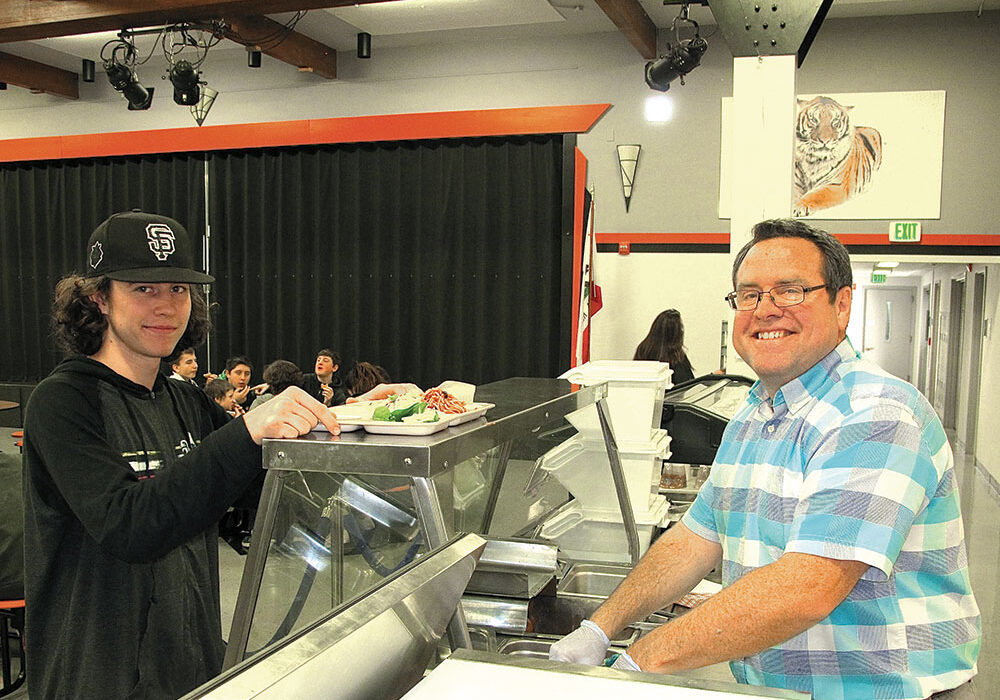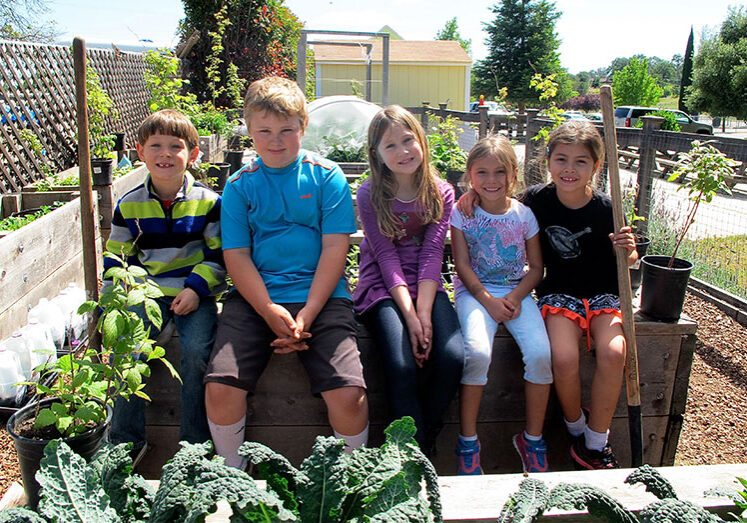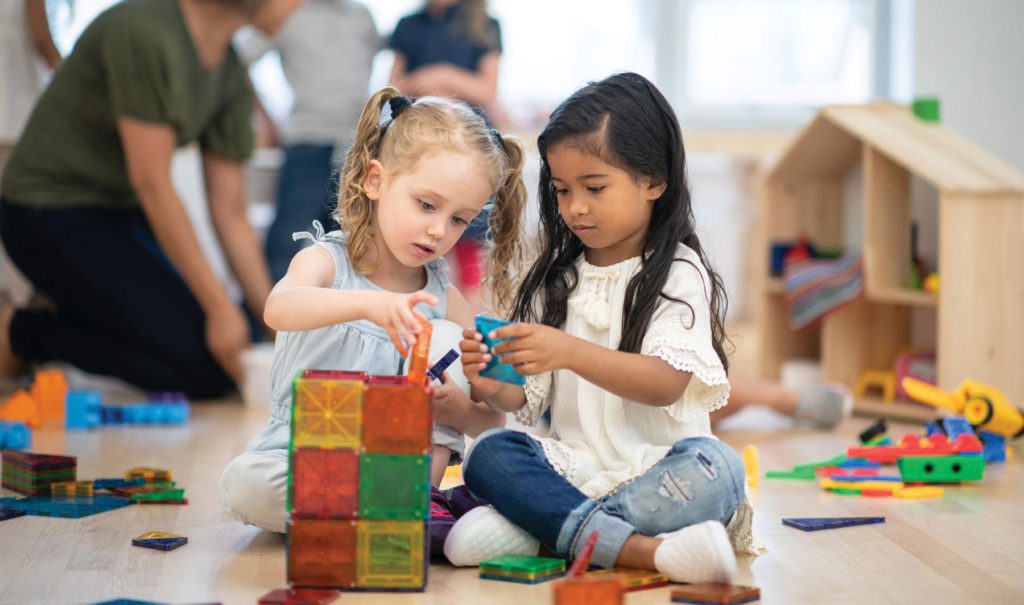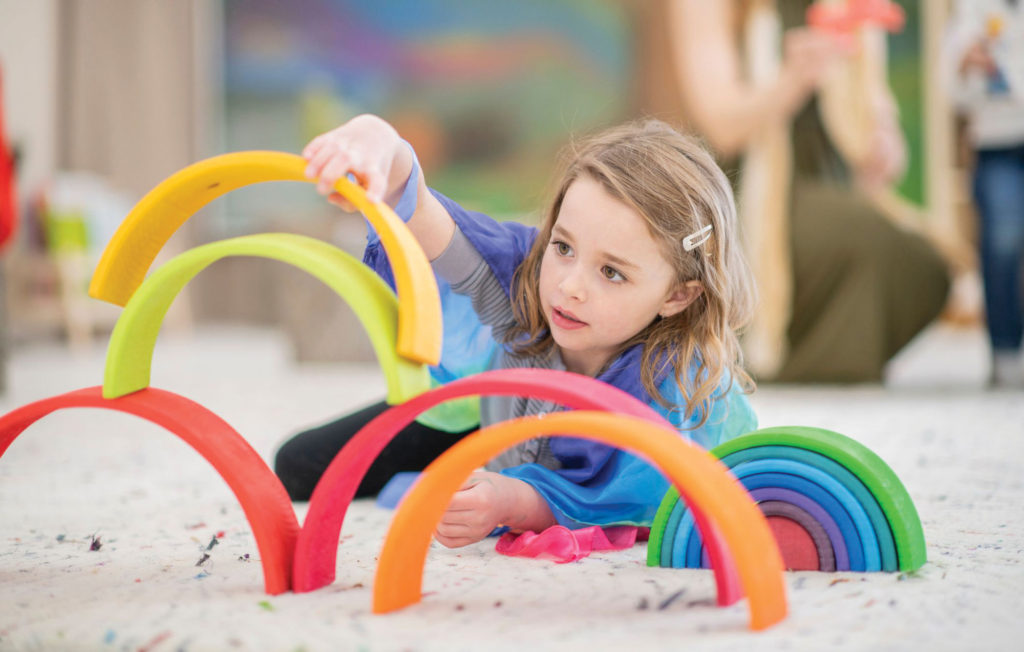If you’re considering a Waldorf or Montessori school, there’s a good chance you believe children thrive when they have control over their learning environment. You probably also believe your child’s emotional development is just as important as, if not more important than their academic progress.
Not sure which model would be best for your child? We talked to experts to help you understand where the two educational philosophies overlap, how they diverge, and what that means for your kids.
A deep respect for the child as an individual
Both Montessori and Waldorf schools share a deep respect for each child as an individual and are committed to fostering both academics and social-emotional learning. Both institutions allow each child to take an active role in determining their curriculum and the pace at which they move through it.
Waldorf education sees imaginative play as the primary means through which children learn. According to Lori Ann Kran, PhD, Pedagogical Director of Shining Mountain Waldorf School in Boulder, Colo., “We argue that early childhood students learn best through imitation in a welcoming, natural environment that focuses on free, imaginative play.”
Waldorf schools are known for their focus on using natural materials. Kran says, “In early childhood classrooms, all materials are made out of natural materials such as wood, silk, cotton. Toys tend to be open-ended and able to adapt to the child’s imagination. Hence, a log can become a seat or table, a ship, or a part of a fort.”
Montessori schools, on the other hand, focus on giving children the chance to learn through practical experiences in mixed-age classrooms.
Montessori lessons endure from the first school in Rome
According to Michelle Yezbick, Director of Sherwood Montessori Charter School in Chico, “The first Montessori school, Casa dei Banbini in the working class San Lorenzo neighborhood in Rome, opened in 1907 and was built to serve children who were too young to attend public school, ages 3-6. The school was a solution to the lack of care the children received while their parents worked, and Dr. Montessori soon noticed that the children appreciated learning to do things for themselves.
“When she first demonstrated how to use a handkerchief to blow one’s nose, the children applauded with delight! They enjoyed caring for their classroom with small brooms that were just their size and were proud to be able to polish metals, comb their hair, tie their own shoes, and do all the things that big people could do.”
In Montessori classrooms today, Yezbick says, “These lessons endure and change with the times. Today’s Montessori students may learn how to prepare food, tend a garden, care for classroom pets and plants, weave and knit, or plan a field trip for their class. Older students learn about entrepreneurship and plan and carry out fundraisers. These activities support the development of coordination, concentration, and independence.”
Waldorf pairs subjects in a holistic manner
According to Kran, Waldorf holds that children in grades one through eight learn best “when all subjects—academic, artistic, athletic, and social—are brought ‘artistically,’ so that students’ imaginative, emotional lives are activated and engaged.” This is why math concepts are paired with rhythmic movement for students in grades one through four; Kran explains, “Research acknowledges that younger students learn math best through movement.”
Similarly, Waldorf reading and writing curricula are rooted in what Kran calls a holistic and artistic approach. “Beginning in first grade we tell rich stories and later histories so that students actively develop the capacity to think sequentially,” she says. “Waldorf students begin to see themselves as authors early on because they are, with the guidance of their teachers, creating their own writings and textbooks, which we call main lesson books.”
By focusing on “will forces” or imitation in the early years, Kran says Waldorf helps lay the foundation for critical thinking when children reach high school, “so they graduate ready to ask new questions and to enter their futures feeling empowered and competent.”
Montessori academics — concrete lessons with specific materials
Montessori academics, on the other hand, give children “three-dimensional manipulative materials designed specifically for Montessori. These allow all lessons to be concrete and for children to be able to work with the materials,” says Green.
Yezbick says Dr. Montessori designed the materials to be attractive and satisfying to use, incorporating the senses and movement to capture many modes for learning. An example in early literacy are the sandpaper letters. Children use their fingers to trace the shape of sandpaper letters glued on smooth colored boards as they repeat the sound the letter makes. This experience uses more sensory experience to learn early reading skills than looking at an ink symbol on a paper.
Montessori also introduces academic concepts early, says Green. “The early years (birth through age six) are a critical time to set a strong foundation, so Montessori starts early with the academic curriculum.”
Montessori classrooms include multiple age groups
Classrooms that include children of many different ages are a Montessori hallmark. Yezbick says, “Dr. Montessori noticed that multiple age groups supported natural opportunities for building community, leadership, and independence as well as interdependence.
“There are Montessori environments for school-age children that include 3-6 year olds in primary classrooms, 6-9 year olds in lower elementary classrooms, 9-12 year olds in upper elementary classrooms, and 12-15 year olds in Erdkinder classrooms. There are a small number of Montessori schools that extend the Erdkinder experience to include high school age, or 15-18 year olds. At each level of development, the skills that children are developing physically, socially, academically, and emotionally are considered and addressed. A Montessori approach means that the obstacles to natural and peaceful development are anticipated and removed, with the ultimate goal of self-actualization resulting in a peaceful world.”
Whether you choose Montessori or Waldorf, you can be sure your child will be challenged in a way that meets them where they are and engages both their minds and their hearts.
Posted in: Education
Comment Policy: All viewpoints are welcome, but comments should remain relevant. Personal attacks, profanity, and aggressive behavior are not allowed. No spam, advertising, or promoting of products/services. Please, only use your real name and limit the amount of links submitted in your comment.
You Might Also Like...

Cedar Grove School: A Place Where Children Can Blossom
“Humans learn most easily and naturally in a holistic way,” Cate Clother, founder and director of Cedar Grove School, a Waldorf-inspired multicultural heritage school, says. Waldorf curriculum is built around […]

What’s On The Menu? Lifelong kitchen skills for teens at Dunsmuir High School
“This is not like a class,” Jeff Capps announces to students enrolled in Dunsmuir High School Culinary Arts Program (Dunsmuir, CA). Each new roomful of students may well wonder what […]

What to Do When Your Child Cheats
Think back to third grade. It’s spelling-test day, and the word is “money.” Would that be “m-o-n-i-e”? Maybe, if you just peeked a bit over your friend’s shoulder and took […]

Learning Blossoms In School Gardens Throughout the North State
In recent years, school garden programs have become a widespread movement to bring education outdoors and promote hands-on learning for children. Through community collaboration, gardens are blooming on elementary campuses […]






